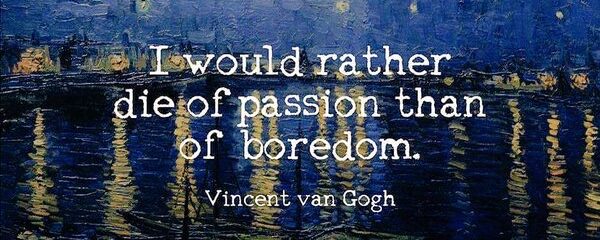
Photo by Google
Relax, the future is already unfolding from long-planted seeds. Japanese Poem
Water which is too pure, has no fish. Zen proverb
Japan is an island country in East Asia, located in the northwest Pacific Ocean. It is bordered on the west by the Sea of Japan, and extends from the Sea of Okhotsk in the north toward the East China Sea and Taiwan in the south. Part of the Ring of Fire, Japan spans an archipelago of 6852 islands covering 377,975 square kilometers (145,937 sq mi). Japan is the eleventh most populous country in the world, as well as one of the most densely populated and urbanized. About three-fourths of the country’s terrain is mountainous, concentrating its population of 125.57 million on narrow coastal plains. The Greater Tokyo Area is the most populous metropolitan area in the world, with more than 37.4 million residents. Japan has been inhabited since the Upper Paleolithic period (30,000 BC), though the first mentions of the archipelago appear in Chinese chronicles from the 1st century AD. Between the 4th and 9th centuries, the kingdoms of Japan became unified under an emperor and his imperial court based in Heian-kyō. Beginning in the 12th century, political power was held by a series of military dictators (shōgun) and feudal lords (daimyō), and enforced by a class of warrior nobility (samurai). After a century-long period of civil war, the country was reunified in 1603 under the Tokugawa shogunate, which enacted an isolationist foreign policy. In 1854, a United States fleet forced Japan to open trade to the West, which led to the end of the shogunate and the restoration of imperial power in 1868. In the Meiji period, the Empire of Japan adopted a Western-styled constitution and pursued a program of industrialization and modernization. In 1937, Japan invaded China; in 1941, it entered World War II as an Axis power. After suffering defeat in the Pacific War and two atomic bombings, Japan surrendered in 1945 and came under a seven-year Allied occupation, during which it adopted a new constitution. Since 1947, Japan has maintained a unitary parliamentary constitutional monarchy with a bicameral legislature, the National Diet.
Kyoto
Kyoto 京都, is one city of Japan. In 794, Kyoto (then known as Heian-kyō) was chosen as the new seat of Japan’s imperial court. The original city was arranged in accordance with traditional Chinese feng shui following the model of the ancient Chinese capital of Chang’an. The Imperial Palace faced south, resulting in Ukyō (the right sector of the capital) being on the west while Sakyō (the left sector) is on the east. The streets in the modern-day wards of Nakagyō, Shimogyō, and Kamigyō-ku still follow a grid pattern. The emperors of Japan ruled from Kyoto in the following eleven centuries until 1869, when the court relocated to Tokyo. The city was devastated during the Ōnin War in the 15th century and went into an extended period of decline, but gradually revived under the Tokugawa shogunate (1600–1868) and flourished as a major city in Japan. The modern municipality of Kyoto was established in 1889. The city was spared from large-scale destruction during World War II and as a result, its prewar cultural heritage has mostly been preserved.
Arashiyama
Arashiyama 嵐 is a district on the western outskirts of Kyoto, Japan. It also refers to the mountain across the Ōi River, which forms a backdrop to the district. Arashiyama is a nationally designated historic Site and Place of Scenic Beauty. The Arashiyama Bamboo Grove is one of Kyoto’s top sights and for good reason: standing amid these soaring stalks of bamboo is like being in another world.
Mount Fuji
Mount Fuji 富士山 located on the island of Honshū, is the highest mountain in Japan, standing 3,776.24 m (12,389.2 ft). It is the second-highest volcano located on an island in Asia (after Mount Kerinci on the island of Sumatra), and seventh-highest peak of an island on Earth. Mount Fuji is an active stratovolcano that last erupted from 1707 to 1708. The mountain stands about 100 km (62 mi) southwest of Tokyo and is visible from there on clear days.
Tokyo
Tokyo 東京 is the capital and most populous prefecture of Japan. Located at the head of Tokyo Bay, the prefecture forms part of the Kantō region on the central Pacific coast of Japan’s main island of Honshu. Tokyo is the political and economic center of the country, as well as the seat of the Emperor of Japan and the national government. In 2019, the prefecture had an estimated population of 13,929,280. The Greater Tokyo Area is the most populous metropolitan area in the world, with more than 37.393 million residents as of 2020. Originally a fishing village, named Edo, the city became a prominent political center in 1603, when it became the seat of the Tokugawa shogunate. By the mid-18th century, Edo was one of the most populous cities in the world, with a population numbering more than one million. Following the end of the shogunate in 1868, the imperial capital in Kyoto was moved to the city, which was renamed Tokyo (literally “eastern capital”). Tokyo was devastated by the 1923 Great Kantō earthquake, and again by Allied bombing raids during World War II. Beginning in the 1950s, the city underwent rapid reconstruction and expansion, going on to lead Japan’s post-war economic recovery. Since 1943, the Tokyo Metropolitan Government has administered the prefecture’s 23 special wards (formerly Tokyo City), various bed towns in the western area, and two outlying island chains.










































































































